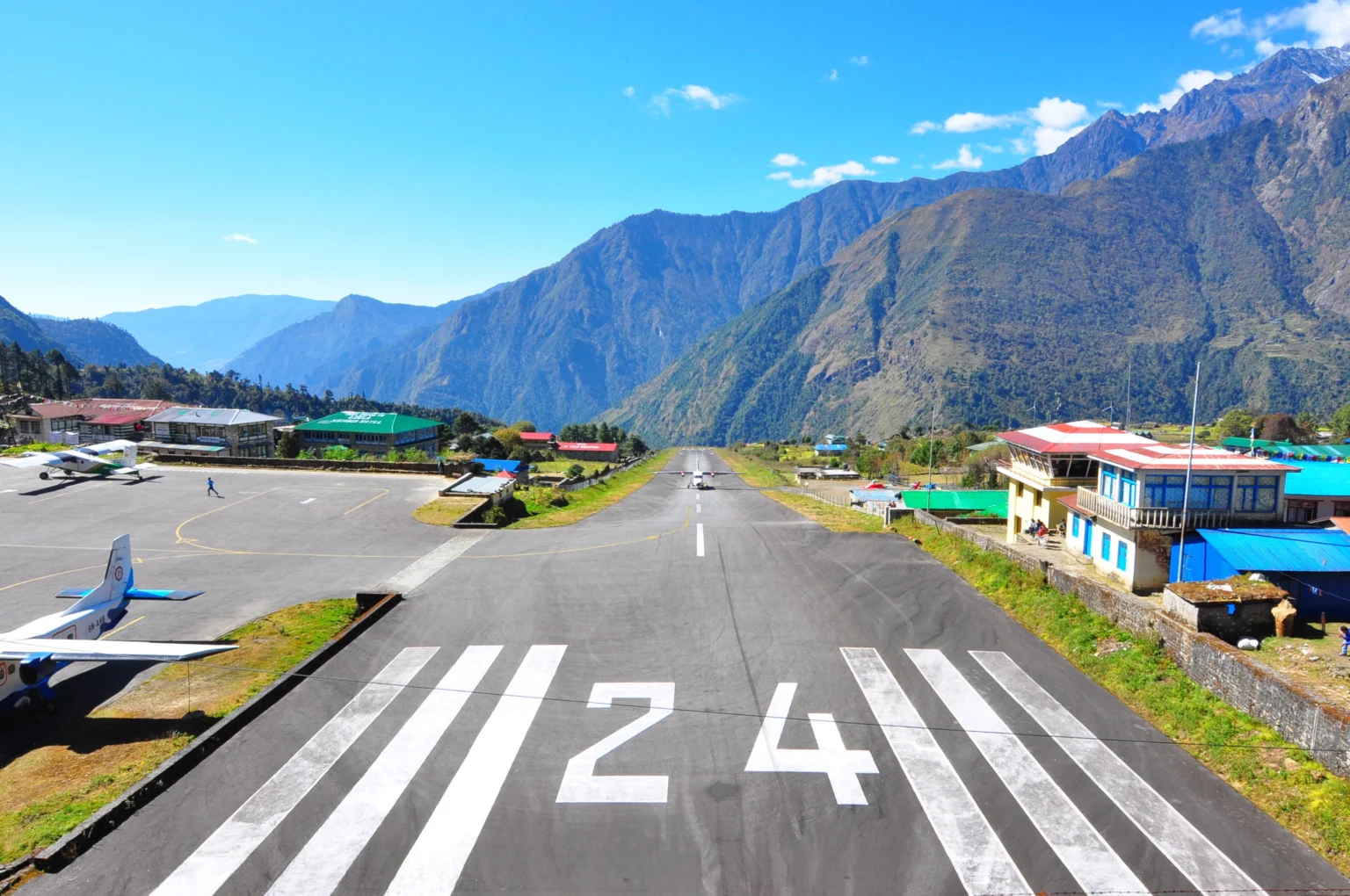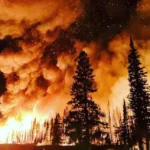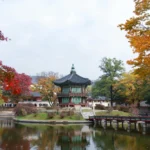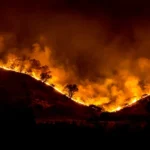Despite upgrades and stricter regulations, Tenzing–Hillary Airport—Lukla, Nepal—retains its title as the planet’s most dangerous airport. Sitting precariously at 2,845 m (9,337 ft), with a dramatic 527 m runway sloped at a steep 11–12%, every flight here is a high-stakes challenge.
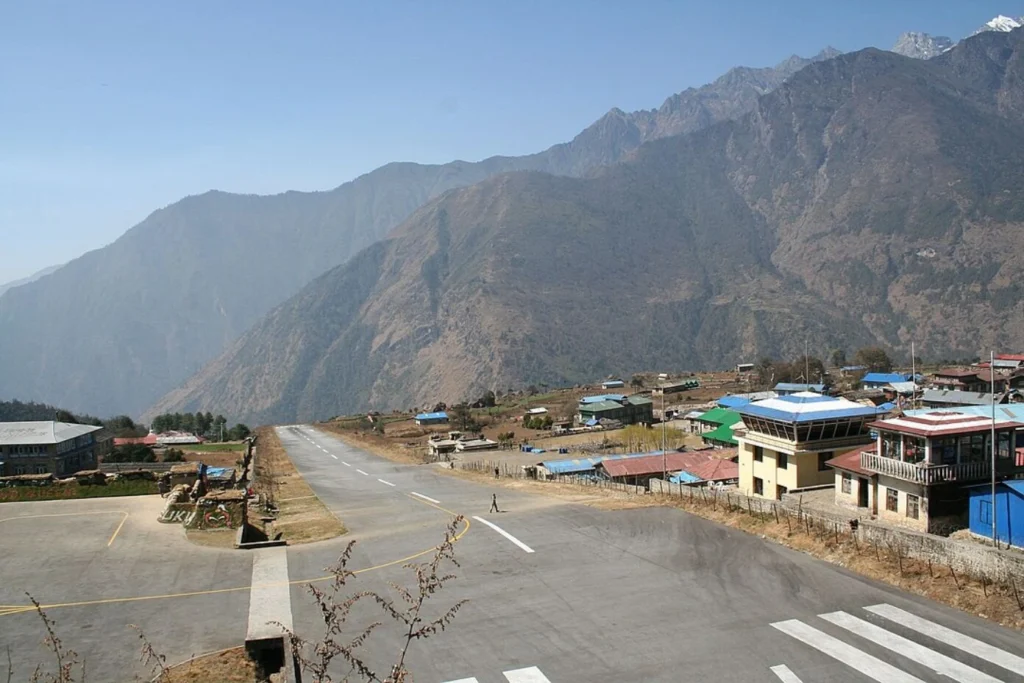
Why Lukla’s Runway Tests Pilots’ Limits
- Short, sloping runway: Measuring just 1,729 ft long and tilted significantly, the runway ends with a vertical drop on one side and a cliff or wall on the other. One misjudgment is unforgiving.
- Altitude challenges: High altitude means thinner air, which reduces engine thrust and lift—forcing planes to land fast and gain speed quickly for takeoff.
- No instrument systems: Pilots rely solely on visual flight rules (VFR), requiring immaculate timing and terrain awareness—there is no second chance for aborted approaches.
When the Weather Turns Against You
Lukla sits where microclimates collide—visibility can plummet from kilometers to zero in minutes. Wind shear, fog, and monsoon clouds make day-to-day operations unpredictable:
- During Monsoon (June–Aug), up to 50% of flights are canceled by late morning.
- Even in clearer seasons, sudden downdrafts, gusts, and fog delays force frequent disruptions.
Only the Elite Fly Lukla
Regulations are tight—with specific training requirements:
- Pilots must complete at least 100 STOL landings and multiple runs as co-pilot before soloing
- Only special STOL aircraft—like Twin Otters and Dornier 228—are permitted
A Troubled History
The airport’s risk is real—dozens of incidents have occurred, with several fatal:
- 2008 Yeti Airlines crash killed 18 after approach failure in fog
- 2017, 2024 crashes due to veering off runway—one plane hit a wall; another slid into a helicopter, killing three
- 2025 Goma Air accident saw an L‑410 slide off runway in low visibility material
When Flights Vanish, Locals Suffer
- Flight delays strand trekkers: Air traffic halts can leave hundreds stranded in Lukla, causing shortages and price spikes.
- The airport draws over 100 flights daily at peak season, a logistical nightmare in a narrow valley.
Safety Measures & Future Outlook
Though no radar or ILS systems exist yet, officials have implemented trained ATC staff, stricter weather checks, and upgraded runway surfaces since its 1964 origin—thanks to Sir Edmund Hillary’s efforts.
Still, the combination of terrain, weather, and operational constraints means Lukla remains a daredevil pilot’s proving ground.
Alternatives & Advice for Travelers
- Overland trek to Jiri or Phaplu, then proceed to Lukla on foot
- Helicopter transfer—fast but expensive (4-figure USD range)
- Build buffer days into your itinerary to accommodate frequent flight delays
Final Word
Tenzing–Hillary Airport is more than a danger zone—it’s the line between the world’s tallest mountain and your Everest dreams. For pilots, it’s a demanding test; for travelers, an exhilarating rite of passage. As long as Lukla remains the only aerial artery to the Khumbu, it will keep thrilling, terrifying, and humbling those who traverse its perilous runway.
References:
- CNN Travel – “Flying into Lukla: The world’s most dangerous airport”
- National Geographic – “Why Lukla Airport Is So Dangerous”
- BBC Travel – “Nepal’s Treacherous Trek to Everest”
- The Himalayan Times – Aviation Reports on Lukla Incidents

